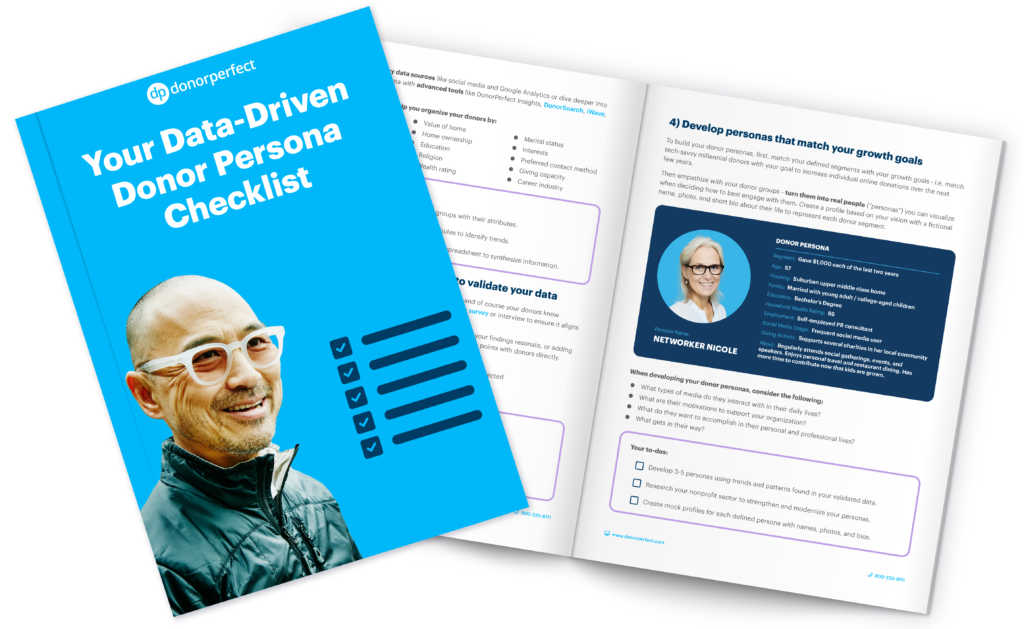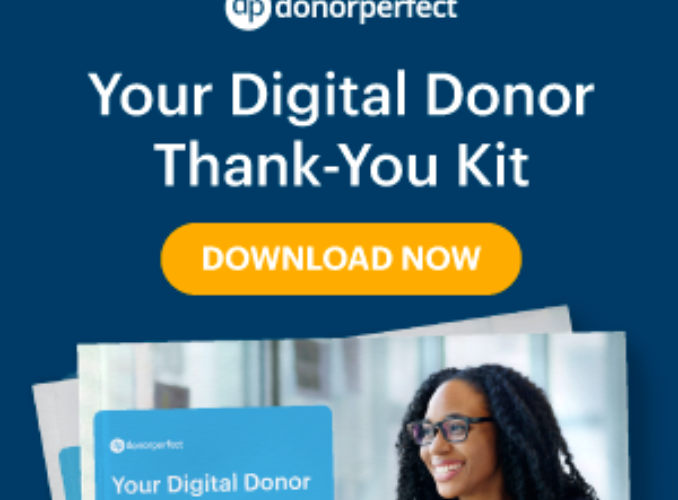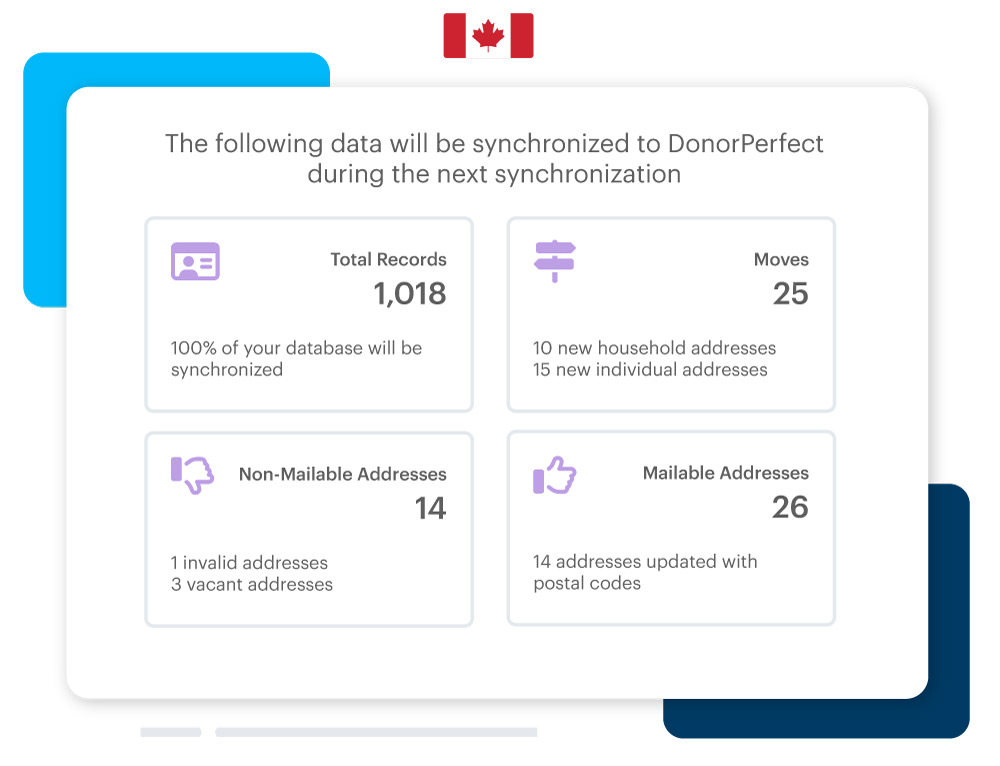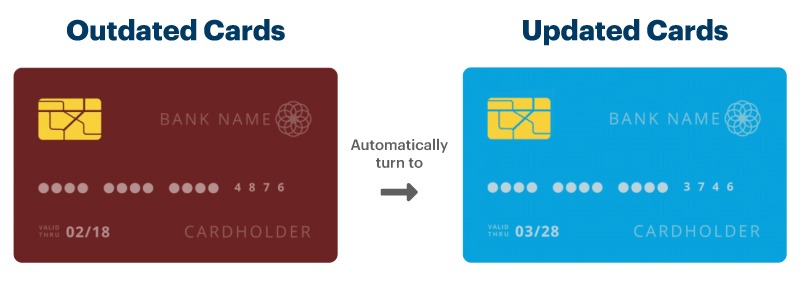How Much Do Donor Demographics Matter?
Nonprofit organizations are businesses that rely on revenue just the same as all businesses do. While they differ from for-profit organizations in fundamental ways, there are some unmistakable similarities as well. One of these is the necessity of attracting people to your organization, whether they are consumers or donors. Typically, the better you are at speaking to your audience, the more revenue you attract and the more successful you become.
So how do businesses speak to their audiences? Traditionally, targeted messaging – knowing the ins and outs of consumers or donors helps organizations create relatable messages that speak directly to their motivations. Demographics play an essential role in establishing personas that help in making effective marketing decisions.
What is a donor persona?
A donor persona is a fictional donor profile that you and your team can create together to better visualize your target audience. The persona is a representative of a group of individuals that share common traits or demographics. Each audience segment that you want to tailor a message to should have its own unique donor persona
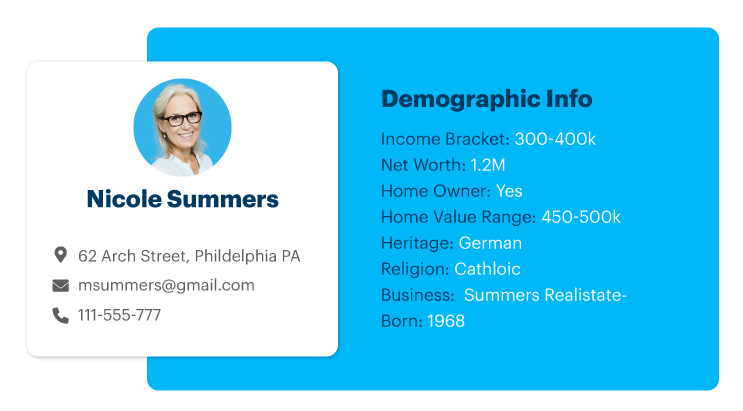
Using donor demographics to inform your campaign strategies
Nonprofits benefit just as much from understanding donor demographics as any other business. Each donor demographic carries a different weight. Some of them will matter a lot and others hardly at all depending on what your campaign is focused on. In order to identify the demographics that will be most influential, it’s best to first establish one or more primary goals for each of your fundraising campaigns.
Examples of campaign goals:
- Increase monthly giving program by an additional 50 donors
- Retain 35% of our donors from the current year
- Promote our volunteer program and train 30 new volunteers
- Gain 100 new followers on social media
- Increase revenue of our major gifts program by 15%
After you’ve identified your campaign goals, it’s important to pay close attention to what demographic may help you most effectively reach those targets.
For example, if your campaign goal is to increase monthly giving subscribers, the ideal target audience for this push would be young professionals or millennials. According to The Nonprofit Source, over 52% of millennials prefer to make monthly donations over a one-time gift.
Each of these goals will have demographics that make a larger impact than others. It’s not necessary, nor recommended to give equal weight to all commonalities. You may find that your target audience is vastly different in many ways, but shares one common trait that makes them more likely to help you meet your goals than someone else.
When considering donor demographics, you can look at anything from age, location, income level, interests, cultural backgrounds, gender, and more to inform what influences your donors’ philanthropic tendencies. Some of this data can be gleaned from your own fundraising CRM, or you can use third-party sources that specialize in donor data points to gain a fuller picture. Also, never underestimate the value of asking the donor themselves through donor surveys or direct conversations.
7 ways that demographics can inform your fundraising
Capturing and organizing your donor demographics is only a valuable tool if you use them to build your fundraising campaigns. While there are so many ways demographics and donor personas can influence your strategies, here are 7 ways you can use donor demographics to inform your fundraising.
1. Incentives
If you offer a membership program that includes incentives for joining, donor demographics can play a large role in determining what is actually incentivizing to your donors. For example, if a large part of your target audience is working professionals, offering exclusive networking opportunities may be an excellent motivator. On the other hand, if your target audience includes retirees, you may want to reconsider what will appeal to them.
2. Language
The language you choose to use in your fundraising campaigns should be heavily influenced by your donor personas. Appeals sent to long-time volunteers in your area, major donor prospects with high net worth, and first-time donors should all reflect the constituent’s interests and current status on their donor journey with your organization.
3. Tone
Similar to the language of an appeal, the tone of an appeal will change depending on donor demographics as well. An appeal to a group of donors who have previously only made tribute donations will have a different feel than an appeal to your long-time supporters. For lower-income donors, your tone may suggest a collective approach to change, and for higher-income donors, your tone may suggest strategic, planned giving.
4. Geographic location
If you’re hosting an in-person event or fundraiser, geographic location will be a vital demographic to pay attention to when creating your guest list. Chances are you will only want to send out an invite to those who live within a specific mile radius of your event venue. If your organization has a national or international donor base, consider hosting a virtual event that opens up the opportunity to a much wider audience.
5. Call to action
If the call to action in your campaign is to sign a petition, become a crowdfunder, or join your volunteer core, you can consider sending this type of appeal out to a broader audience that may include younger advocates of your cause. Whereas if your call to action is to buy event tickets or become a monthly donor, you will want to narrow down your target to include those more readily able to support this ask.
6. Ask amount
When determining your donor groups and deciding on ask amounts, it is so important to pay attention to your demographics. Asking for a dollar amount too low will leave money on the table, and asking for an amount too high will likely exclude donors who would have otherwise given. Your own data can be instrumental in helping you determine appropriate dollar ranges for your donor segments.
7. Method of solicitation
There are so many ways to send out a donor appeal, and defining your donor personas will help determine the most effective outreach.
The Nonprofit Source reveals that all generations from millennials to baby boomers respond to text messages, but some generations, namely Millennials and Gen Xers, are more prone to respond positively to this type of outreach. The Silent Generation on the other hand is most likely to respond to direct mail appeals.
For more guidance on using demographic data to develop donor personas that will enhance your fundraising campaigns, feel free to download our Donor Persona Checklist below.
